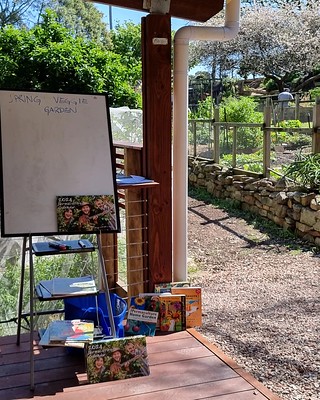Then the level of skill/experience was greater than I anticipated, so it pretty much ended up just being me trying to answer questions in some kind of context.

INTRODUCTIONS
Name, gardening experience, why you're here
* why do you want to create a garden?
- go around and have people offer reasons
-> why you want to create a garden will vary the kind of garden you want to build and how you want to develop it/maintain it* What I am going to teach in this course is *modular*. You are not required to use any and all of it. Think of it as *guidelines* rather than *rules*.
Answers I expect.
- a garden for exploration
- growing vegies to show what can be done
- food stability and staples
- pleasure and enjoyment
NB: more than one of these things can be true at the same timeCourse was originally aimed at educators - is this still the case? I will be addressing some of the generalities in early education.
1. How much garden do you want?
- enough to grow your veggies?
- as much as you can comfortably manage: a couple of hours a week? a couple of hours a day?2. What to grow in your garden?
- whatever you will eat
- whatever the wildlife won't eat!
- how much time do you have to maintain it? (note: weeds are plants that have found a niche they can exploit)3. Where to put it?
- somewhere you'll see it every day and which is easy to maintain
- somewhere with good sun and good water: talk about 'good sun' in Australia, coupled with the conversation about water and water conservation
- soil quailty? Soil can be made, but the direction of the sun and where structures are can't usually be changed4. food for your garden and your garden for food
- soil, composts, worm farms, worm towers
- "food" for the garden: also "inputs" into the garden's productivity - eg. companion planting/pollinators
- flowers and not just food5. three legs of a garden
- plants for human food
- plants for soil food
- plants for pollinatorsBREAK - things to eat
6. Practicalities of gardening
- weeds: the site and how to deal with weeds - "pull, outcompete, suppress" - make it so there's no space for the weeds to grow.
- water: ollas, mulch and ground covers, composting trenches
- pests: bugs that eat (predatory insects), birds (cockatoos, etc.), possums and rats, and human
- time and energy: do things in 'units of work' - mark off a space for working in, then lay out that space.
I thought I was a bit scatty, but everyone else seemed to think it was great and they came away with info they didn't have before.
No comments:
Post a Comment